Health & Social Care: Risk Assessment Strategies for Dementia Patients
VerifiedAdded on 2023/06/11
|16
|1351
|117
Presentation
AI Summary
This presentation provides a comprehensive overview of risk assessment for a new dementia patient in a residential home, focusing on morning activities like gardening. It identifies potential hazards, such as falls and communication difficulties arising from cognitive impairment, and explores how these risks can harm both the patient and the nurse. The presentation details how risk assessments inform care planning and decision-making, particularly concerning patient safety, well-being, and meeting individual needs. Strategies to overcome these risks are discussed, including adequate resource allocation, staff training, financial support, appropriate equipment provision, and optimal staff ratios. The importance of effective communication, proper training for staff to manage dementia patients, and the need for a supportive environment are emphasized to ensure the safety and well-being of both patients and caregivers. The presentation concludes by referencing key studies that highlight the importance of these strategies in improving patient care.
1 out of 16
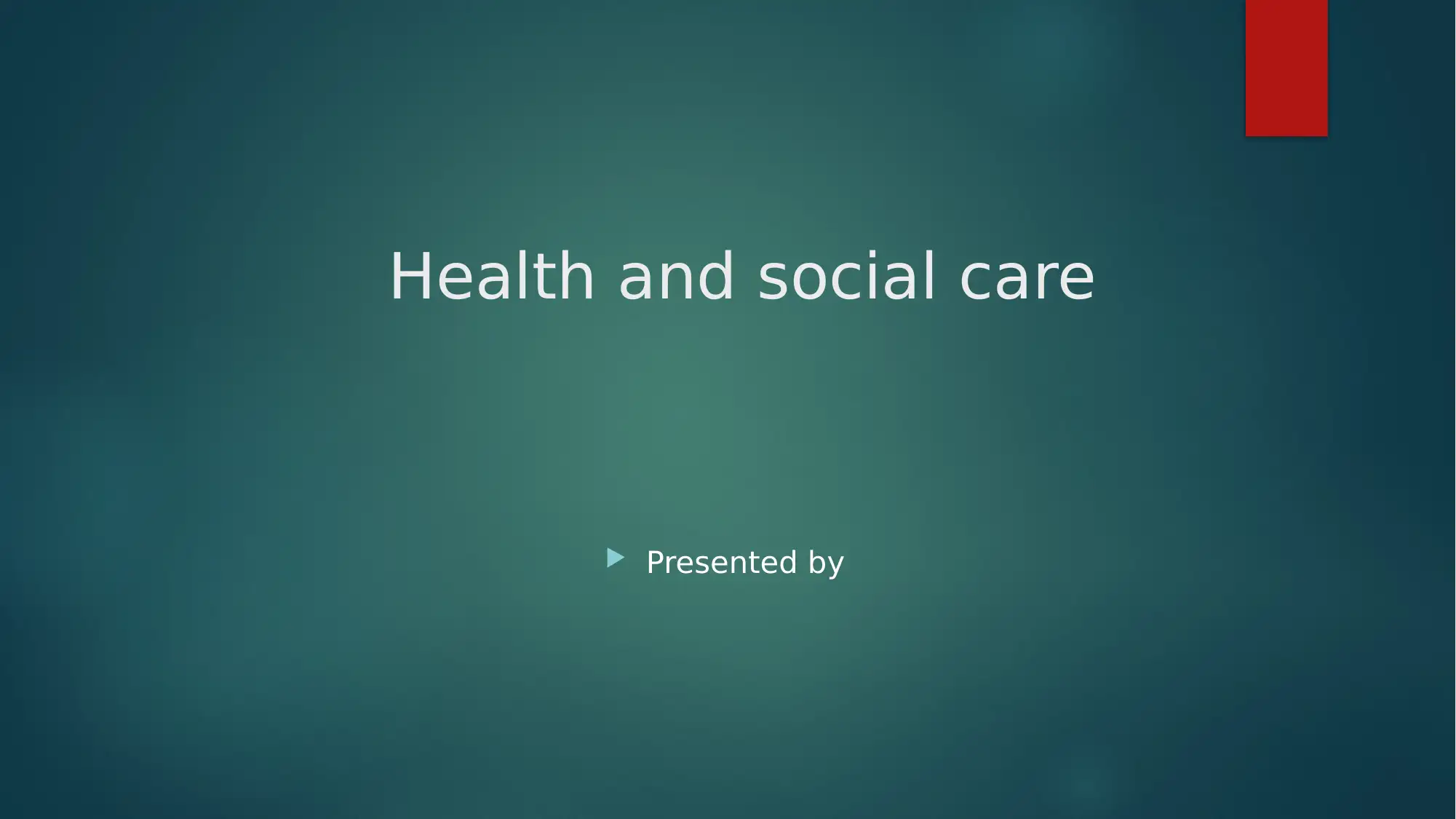
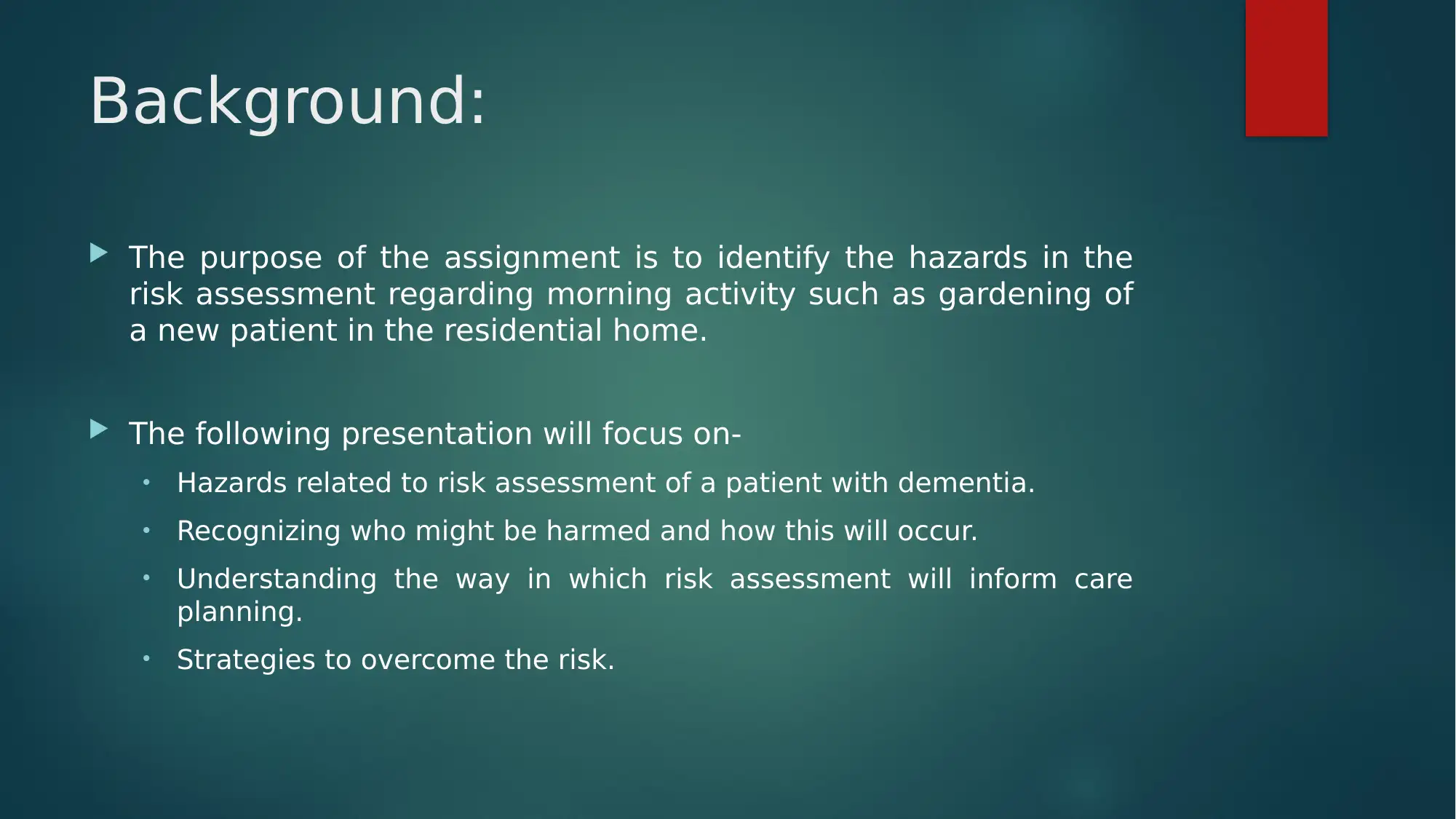
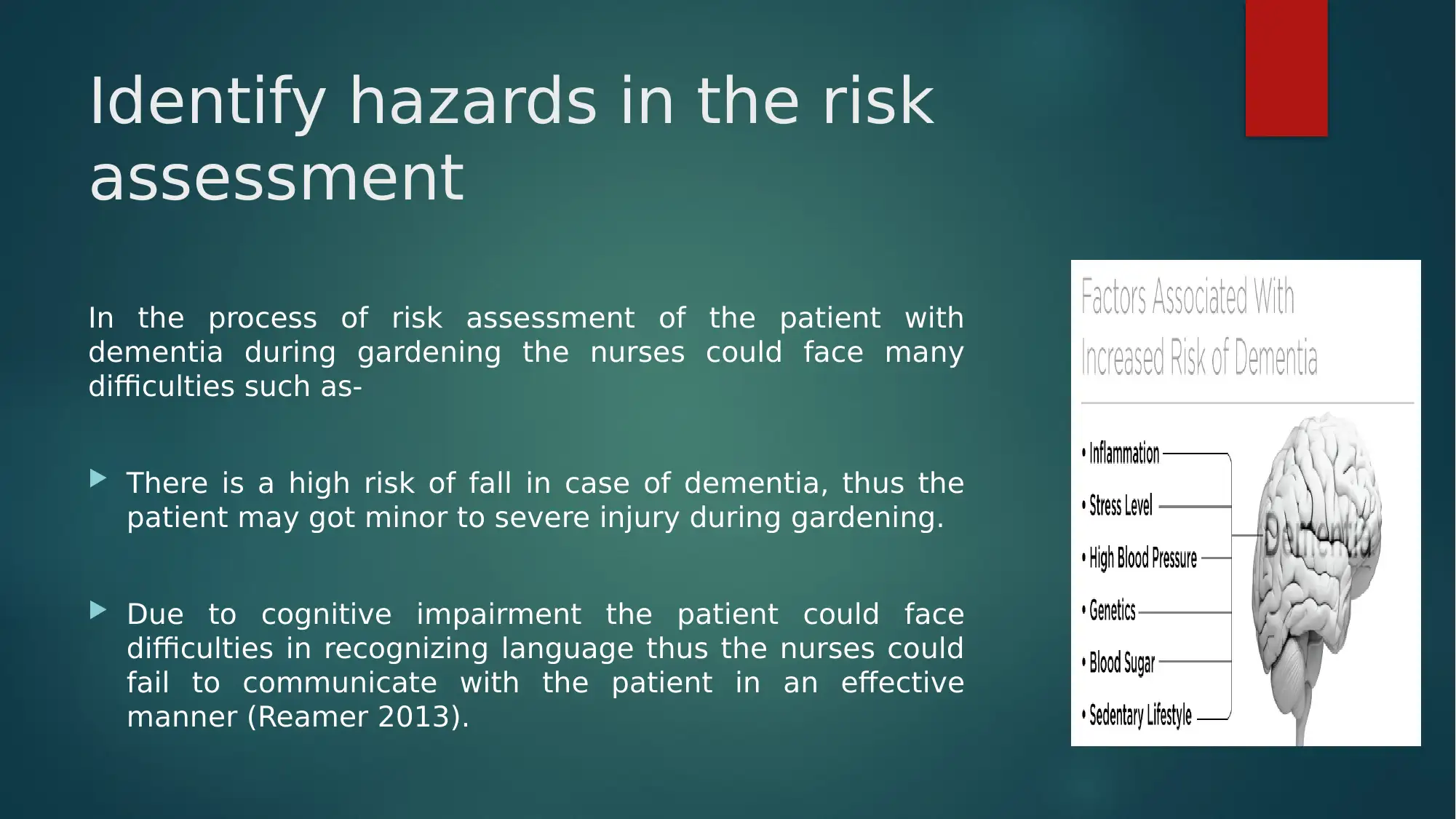

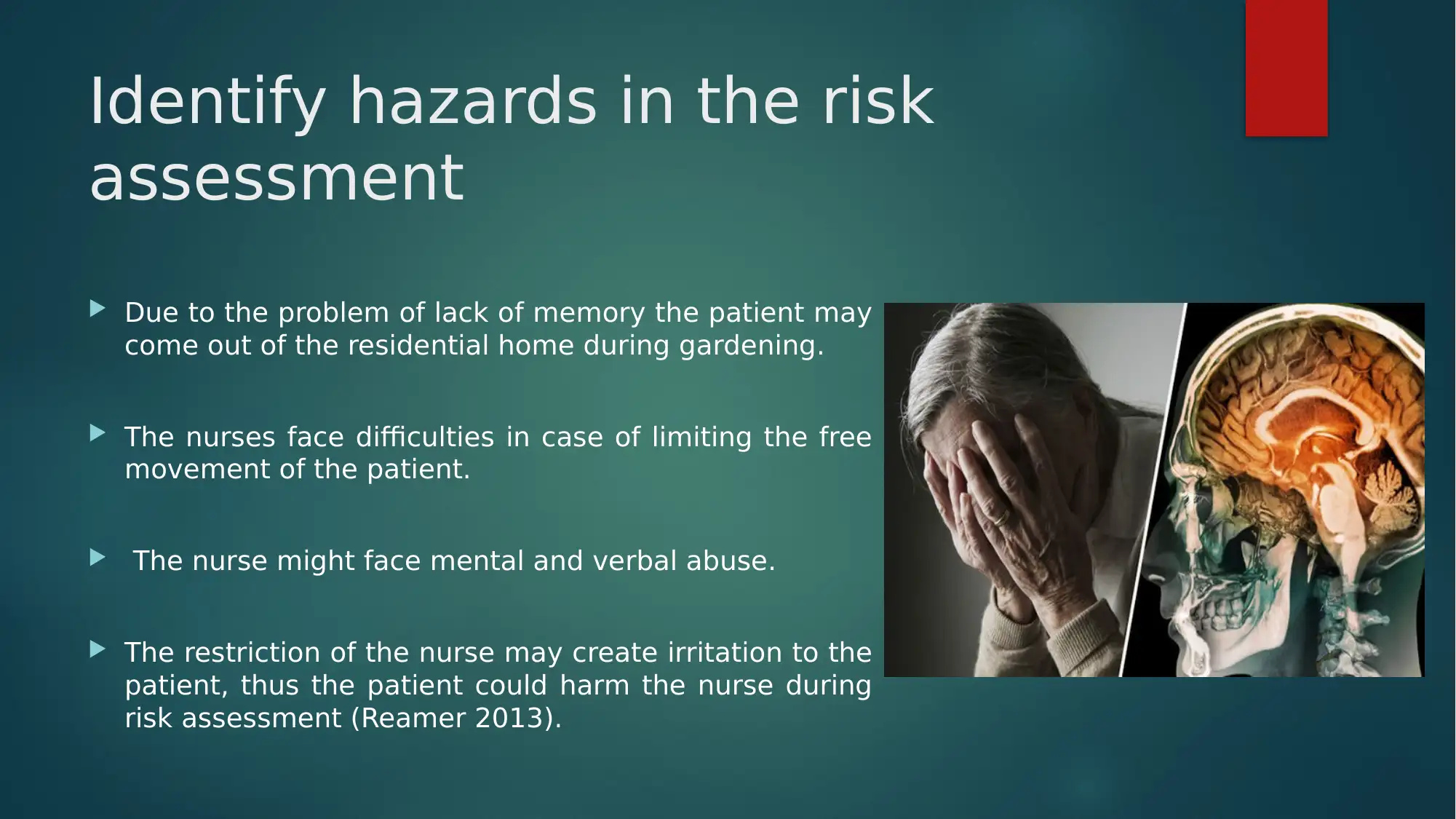
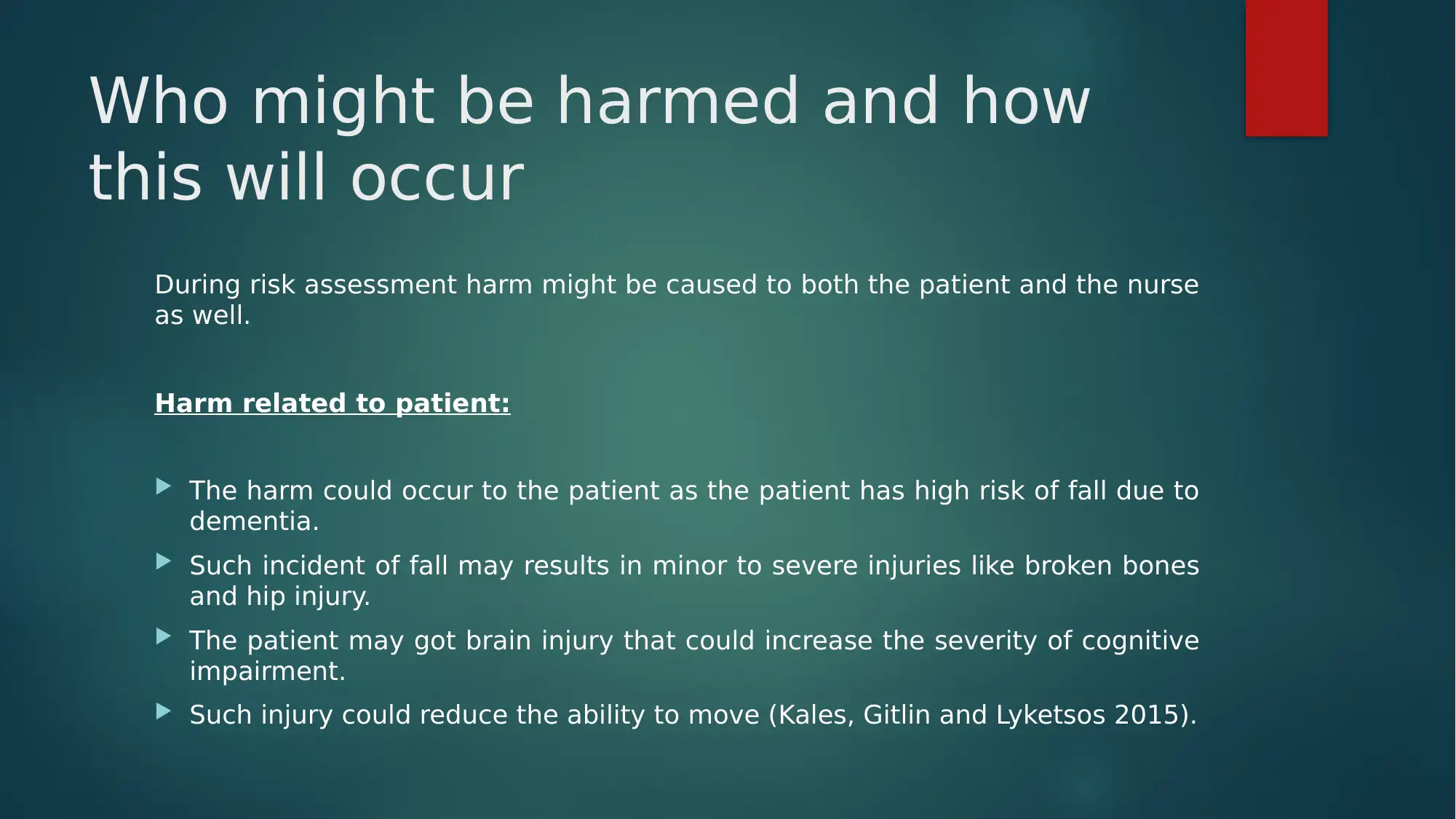
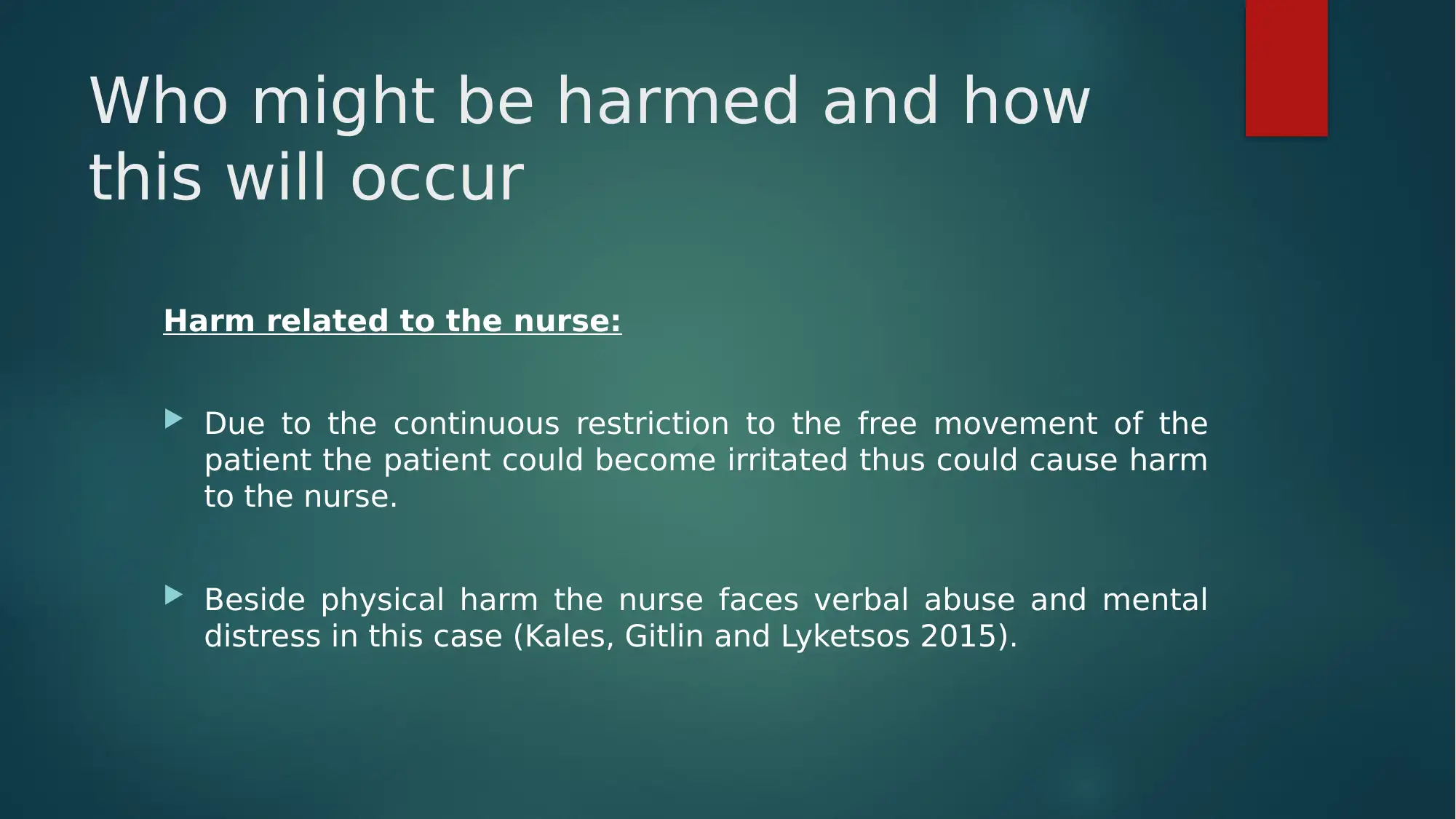
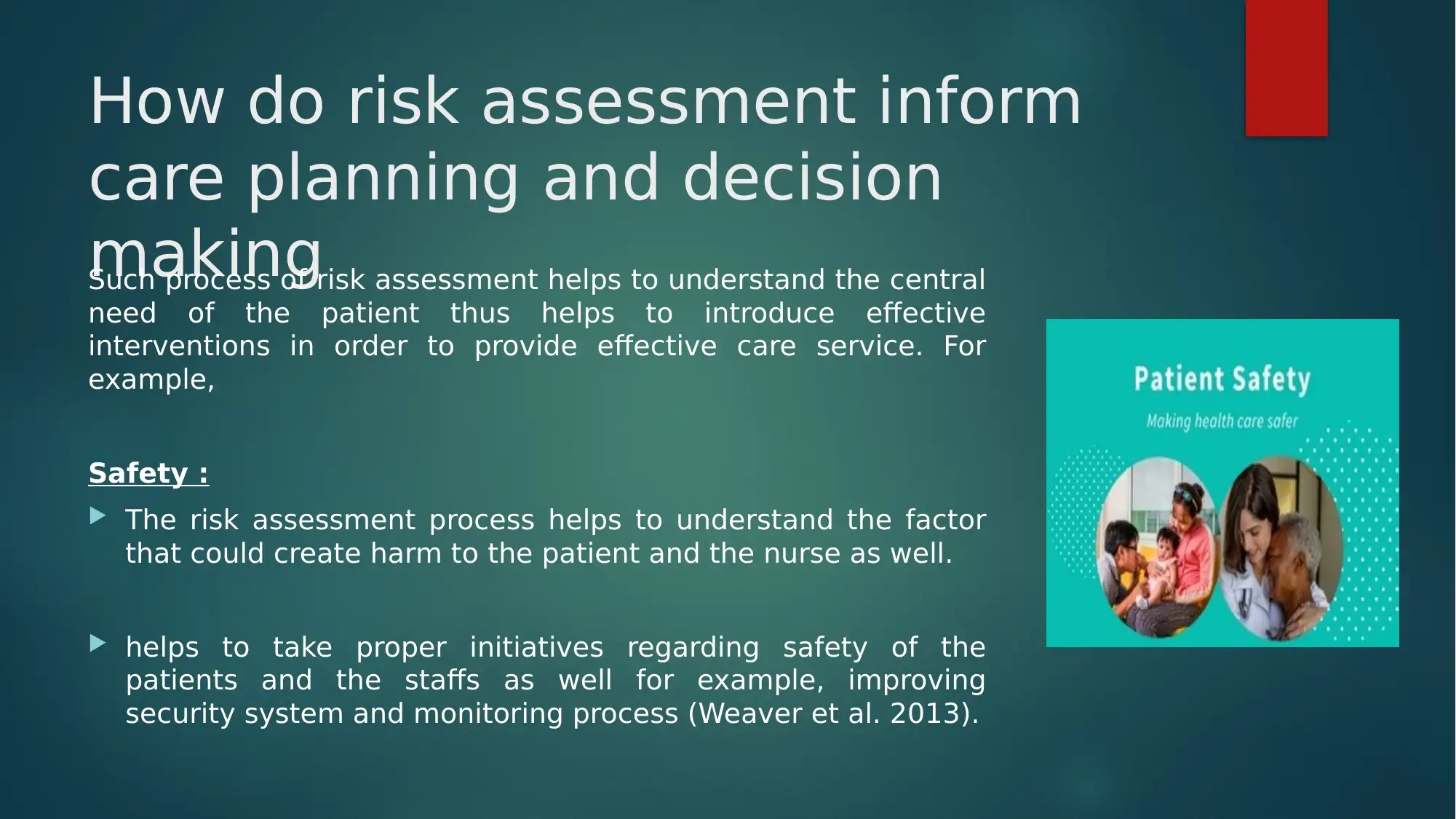
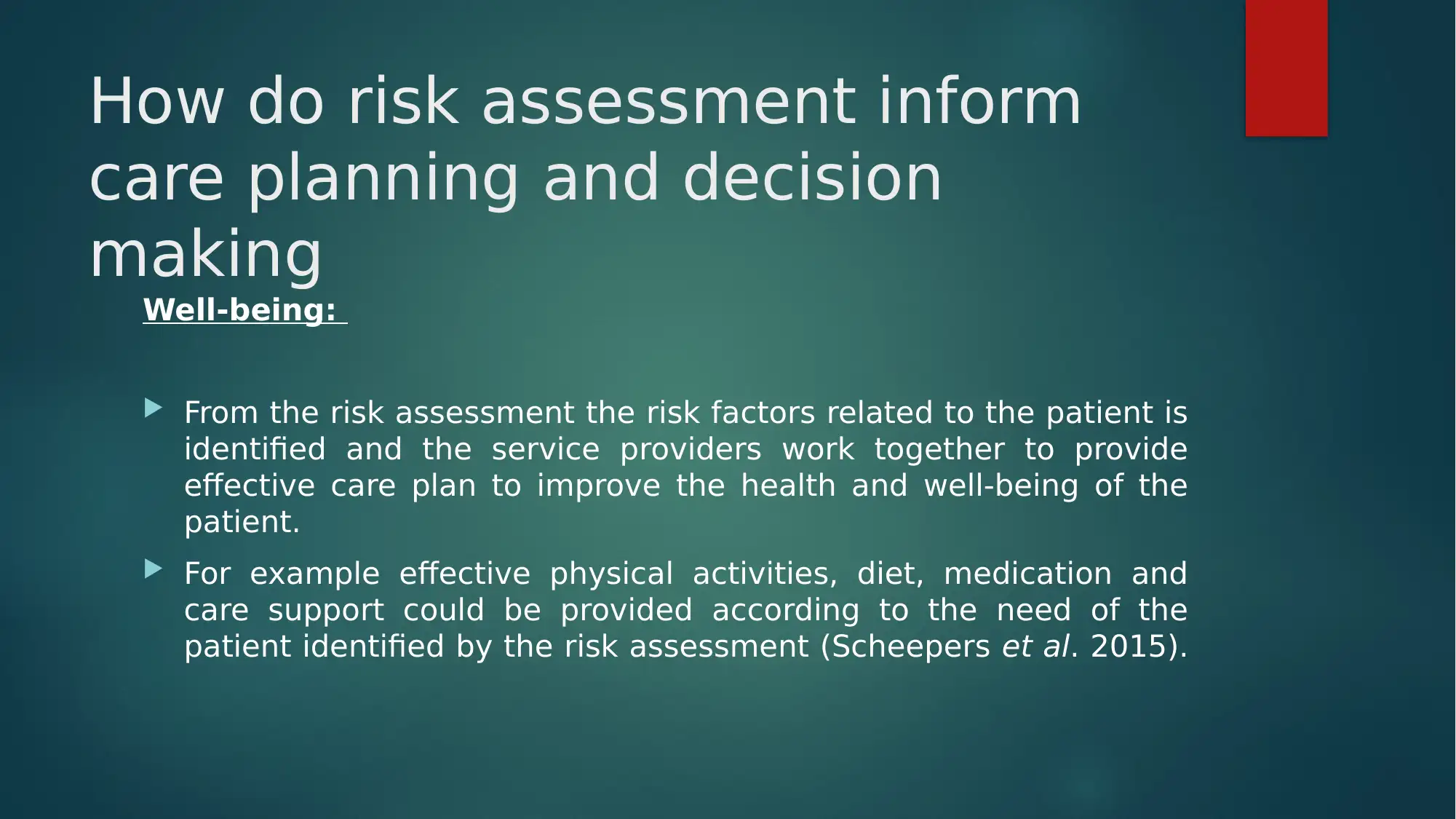
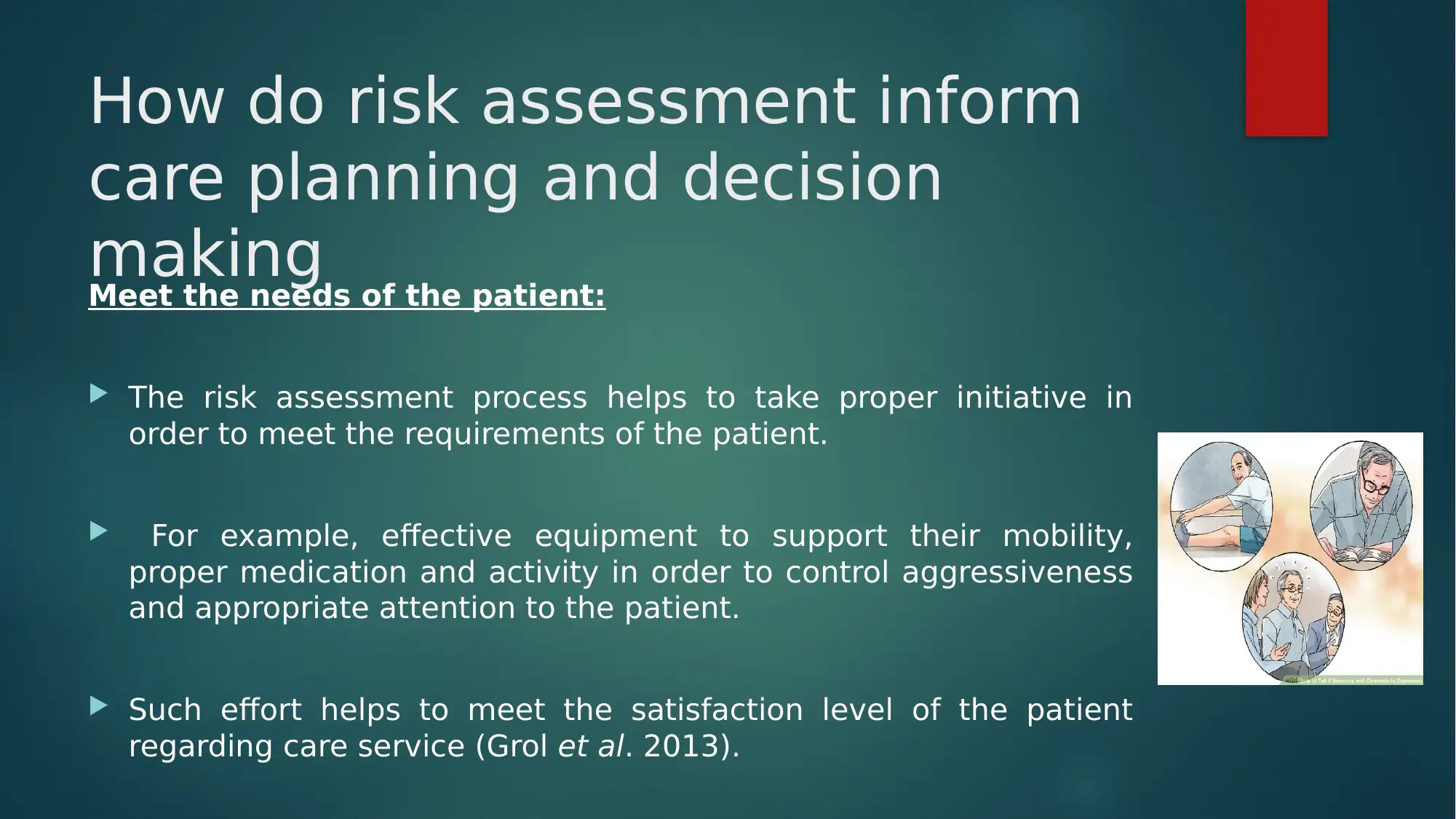
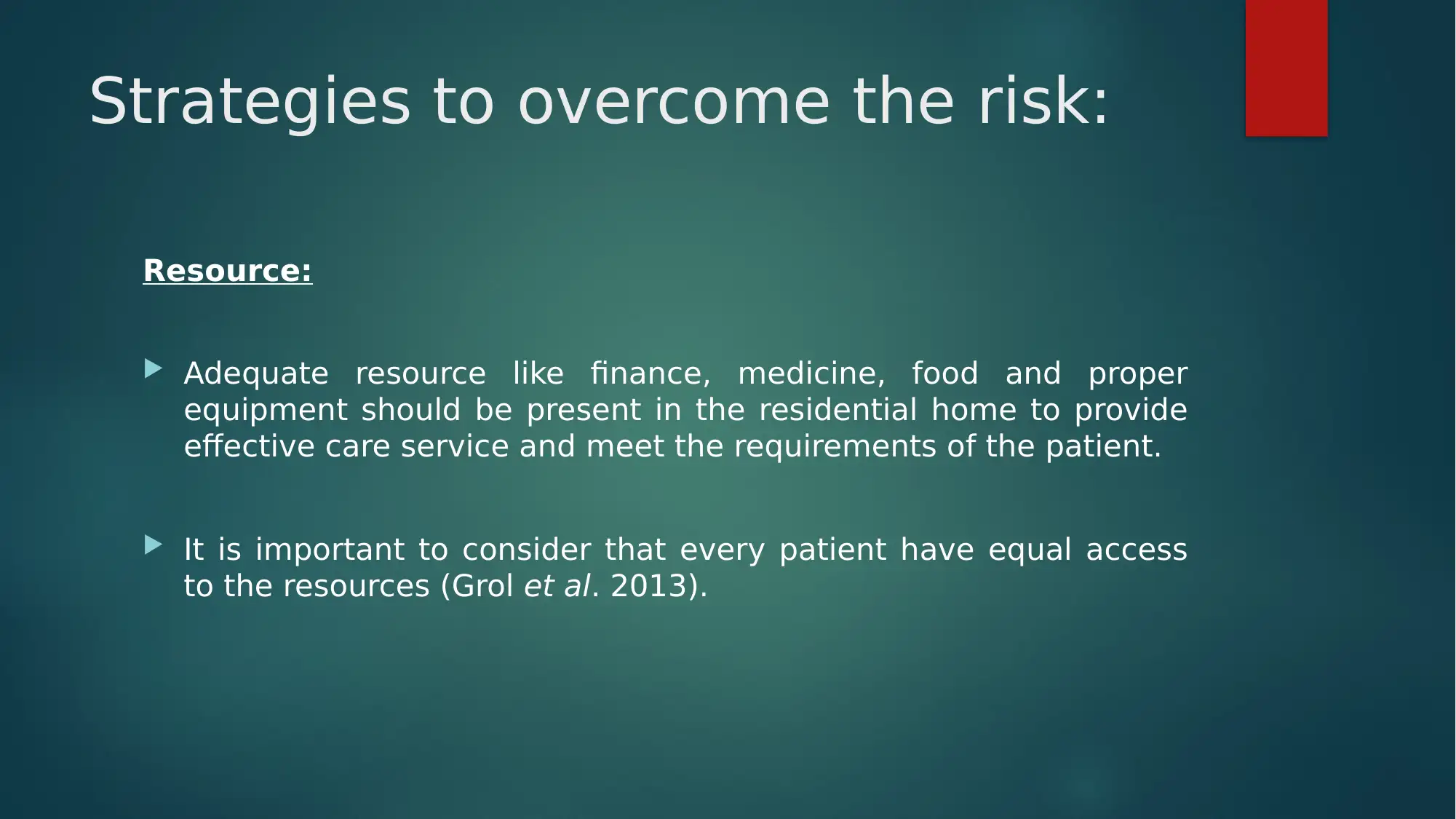
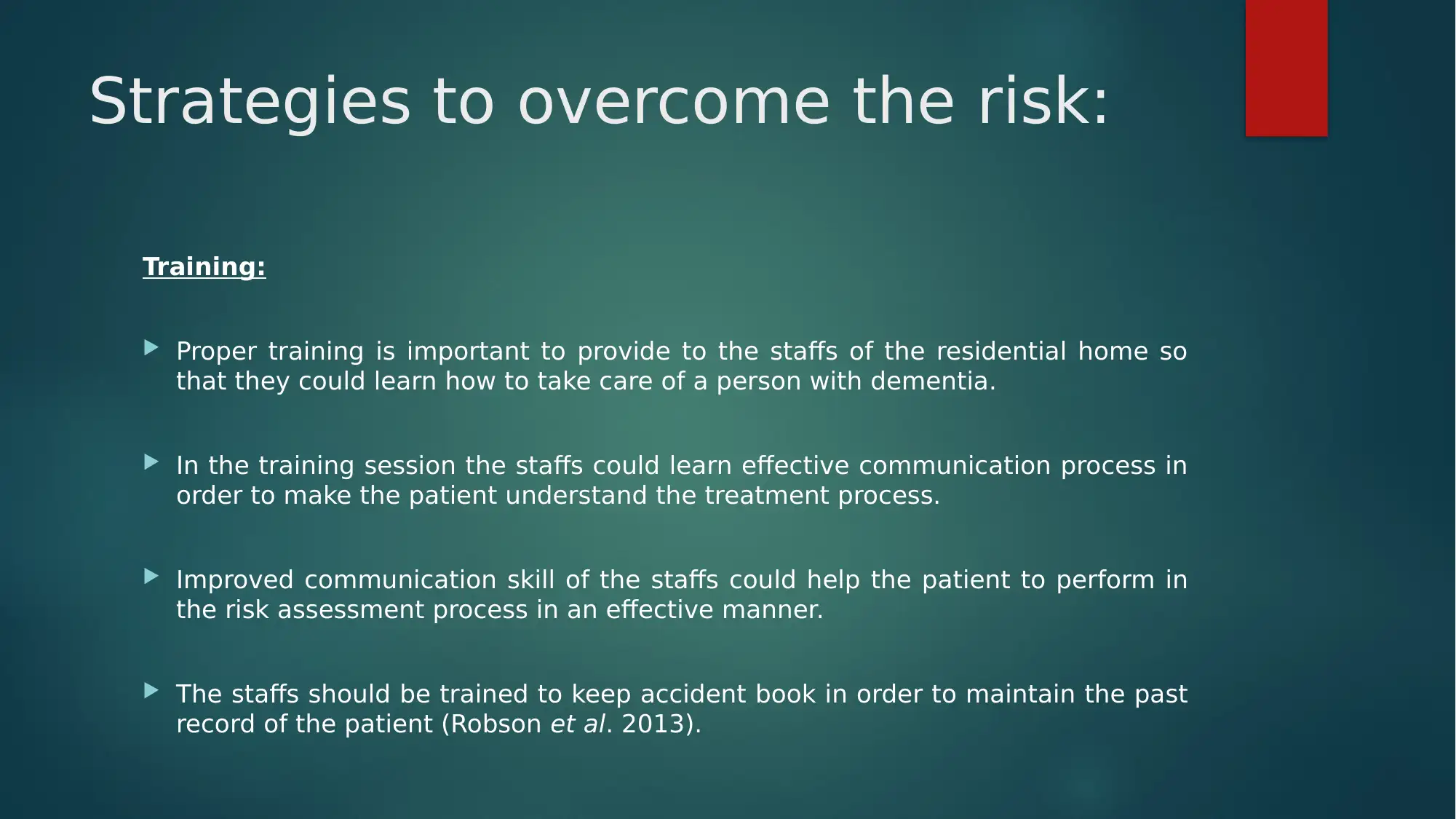
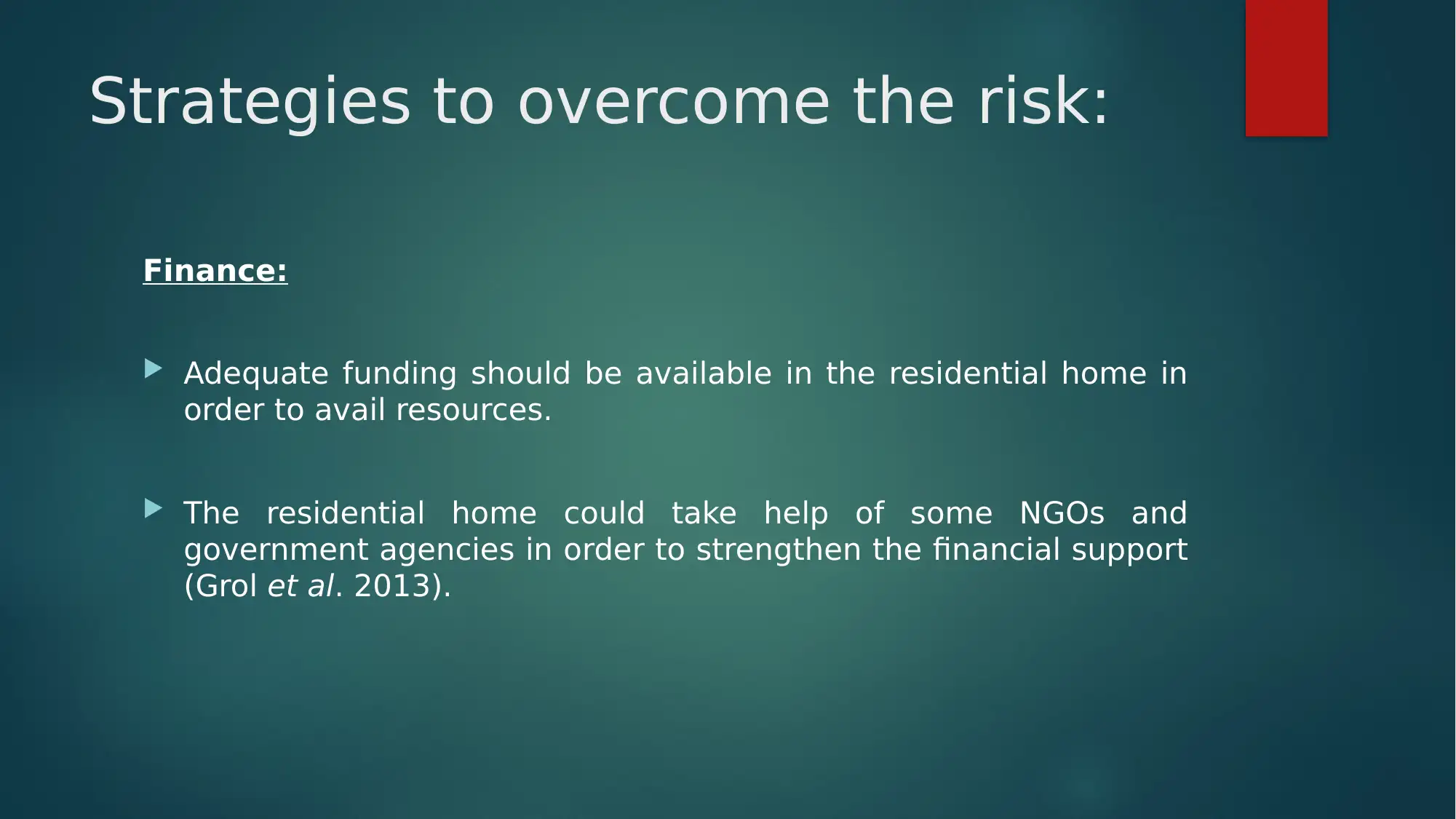






![[object Object]](/_next/static/media/star-bottom.7253800d.svg)